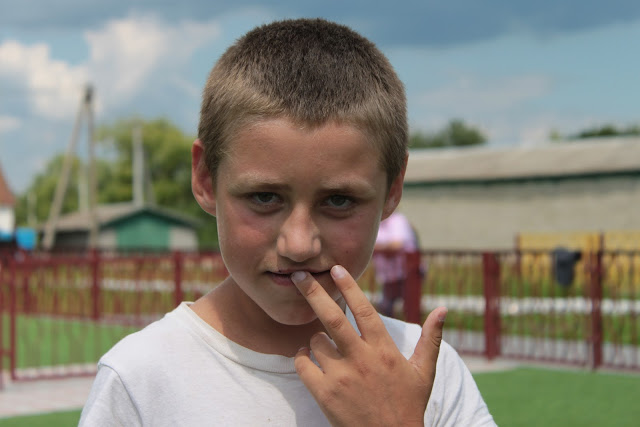But if you never try, you'll never know
Just what you're worth
Lights will guide you home
And ignite your bones
And I will try to fix you
ColdPlay, Fix You


Just what you're worth
Lights will guide you home
And ignite your bones
And I will try to fix you
ColdPlay, Fix You
Most of us live our lives like a bull in a china shop. We try our hardest to keep it together. We do everything we can to leave the shop without breaking everything around us. But in the end, it's impossible for us to leave without damages. After all, we're only human. We damage ourselves. We damage others. And others damage us. As we go through life, the cracks and chips seem to accumulate - leaving us with a shop full of damages. For the disabled boys at Romaniv, the damages that they've sustained sometimes seems too overwhelming to bear.

I met a boy last week at Romaniv - someone I hadn't worked with before. I was asked to do an OT evaluation with him, so I had Angela bring him to the new sensory room. As she brought him into the room, Angela informed me that he is 18 years old, non-verbal, and has lived in Romaniv for the past 10 years of his life. "He's usually by himself and never speaks", Angela said.
After timidly walking through the door, he took a few unstable steps and sank to the mat where he sat for the remainder of the evaluation. He didn't say a word. He didn't make a noise. But looking around the room, he gave a brief, but very bright smile. "In all of my time working here, I've never seen him smile!", said Angela.

Almost immediately, he fixed his attention to something that he had never seen before....his own reflection in the mirror. Attempting to peel his attention away, I called his name and tried to meet my eyes with his. But it was no use. Throughout most of the evaluation, he was lost in the unfamiliar sight of his own image.
Needing more information about him, I asked Angela why he was brought to Romaniv. "He had a traumatic brain injury when he was two years old, and never recovered.", she replied. My heart sunk, knowing that his disability could have been overcome with early treatment and access to rehabilitative care. His body suffered damaged so long ago, but he could have been repaired.
Wanting desperately to interact with him, I continued my unsuccessful attempts to get his attention. Nearly giving up, I turned to my last resort - something that he rarely experiences in Romaniv.....human contact. Situating myself directly in front of him, I put one arm around him and tickled him lightly under his chin with the other. Immediately his eyes met mine. It was as if the ice of his mind had melted away and he was free to connect with the world around him. Looking at me, he beamed with a smile as brilliant as the sun.
We're all damaged, it seems. Some of us more than others. We carry the damage with us. But ultimately, it doesn't matter how damaged we are or how much damage we do. What matters is what we do to fix what we can.



















































